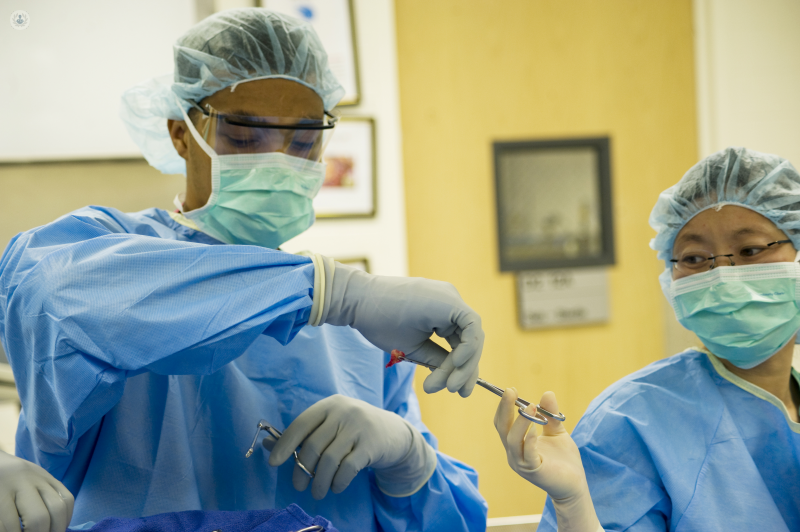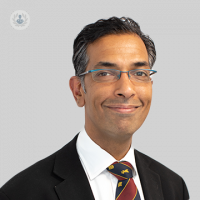Anti-reflux surgery: types, risks and recovery
Written by:When acid reflux and heartburn are making your life miserable thanks to gastroesophageal reflux disease (GORD/GERD) and other medications aren’t an option, your doctor might recommend anti-reflux surgery. In the third and final part of his series on GORD, hiatal hernias and anti-reflux surgery, Mr Zak Rahman explains the different types of surgery, the risks involved, and the recovery process.
What are the different types of anti-reflux surgery?
Anti-reflux surgery is usually carried out by a keyhole technique usually involving four or five small holes through the abdominal wall under a general anaesthetic.
A camera is placed into the abdomen after a space is created using carbon dioxide (harmless as it is breathed out). A number of instruments are used to help to perform the operation.
The aim of anti-reflux surgery is to correct the anatomical abnormalities that may be contributing to GORD. These are:
- To bring the stomach back into the abdomen if a hiatus hernia is present.
- To repair any weakness in the crura (the muscles around the oesophagus).
- To create an artificial valve by wrapping the stomach part way round or completely around the junction of the oesophagus and stomach (LES).
Anti-reflux surgery can be categorised based on the amount of stomach that is wrapped around the area just below the junction (meeting point of the oesophagus and stomach). A full 360 degree wrap is known as a Nissen fundoplication. Anything less than a full wrap is a partial wrap, of which many have been described.
What are the complications and risks?
Anti-reflux surgery works in the vast majority of patients and has good long term results. However, it is important to remember that it is an operation and any operation has potential risks as well as benefits. These need to be weighed up on an individual patient basis.
Although the “wrap” may be adequate in most patients, symptoms of the wrap being too tight are experienced in almost 70% of patients immediately after surgery, due to swelling. Once the swelling subsides, patients can usually eat and drink normally. This takes four weeks in about 90% of patients and settles in six weeks in almost all patients. A small proportion of patients continue to have some dysphagia with solid food and may require a gentle stretch of the wrap using a camera through the mouth (endoscopy).
Other symptoms of “gas bloat syndrome” are common. This is discomfort in the upper part of the stomach caused by excess wind. Some types of anti-reflux surgery restrict burping and vomiting and thereby preventing air escaping. In most patients this symptom settles down very quickly.
Recurrence of symptoms, migration of the wrap, and loosening of the wrap can occur in the longer term.
How long does it take to recover from anti-reflux surgery?
Most patients are in hospital for 24 hours, some patients can even be done as a day-case procedure. The key-hole technique (laparoscopic surgery) allows for quick recovery and less pain compared to open surgery.
A dietician provides a meal plan to allow the surgical inflammation to settle before solid foods are allowed.
The general advice is to refrain from lifting heavy items for four weeks (so as not to strain the diaphragm muscle) and two weeks off work.



